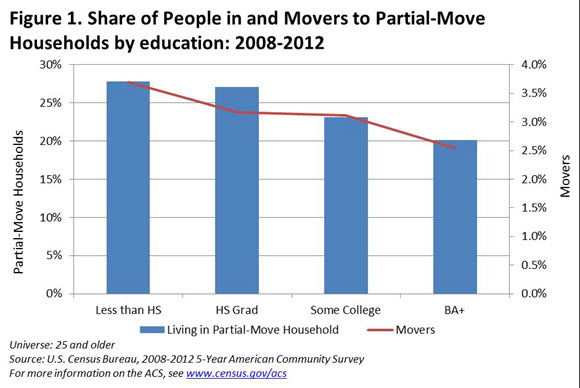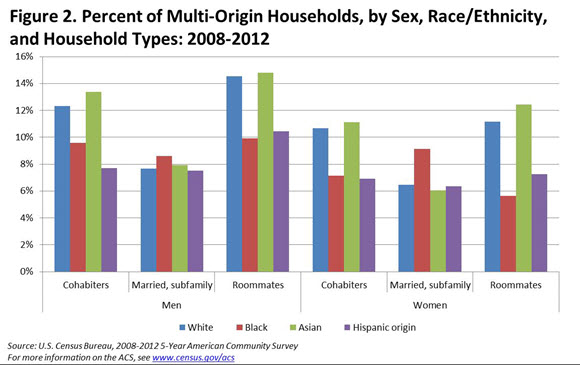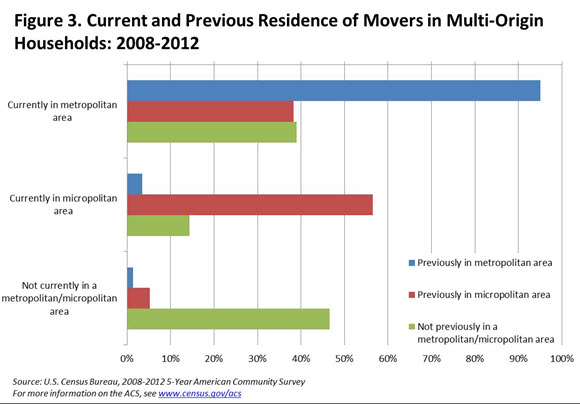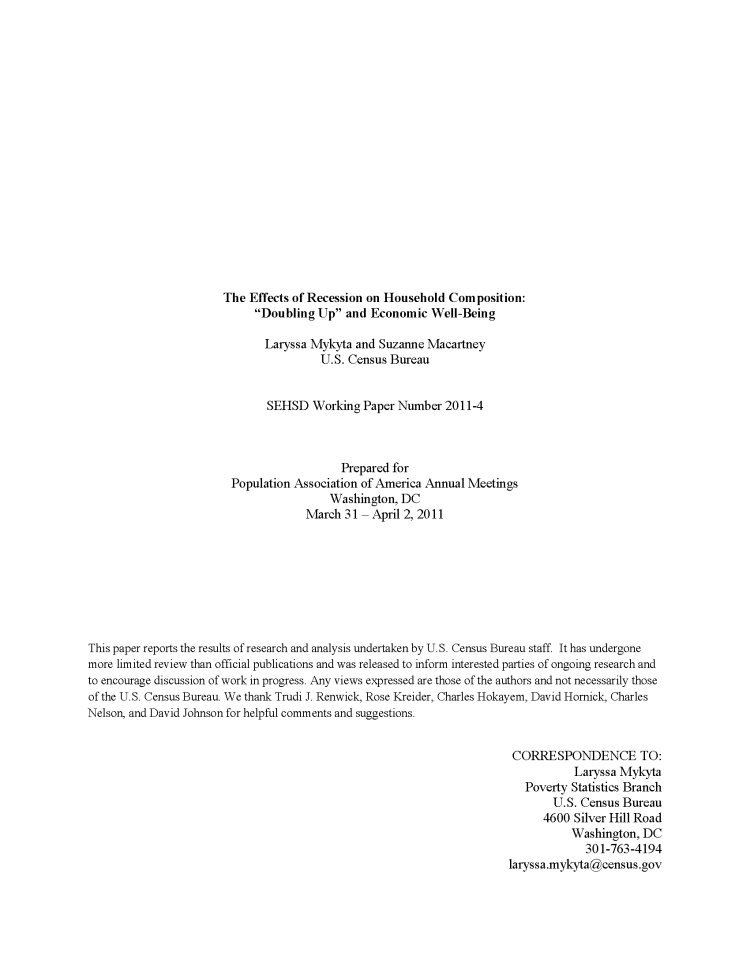How We Came to Live Together: Households Formed by Migration from Different Origins
How We Came to Live Together: Households Formed by Migration from Different Origins
When we think of people moving, we often think of one person or an entire family packing up to live somewhere else. However, this does not describe every move. Often it may be one person joining a household filled with people who have been living in a home for a while. Sometimes a single person is one of many singles or groups of people coming from different places to consolidate and create a new household [PDF <1.0 MB].
Using American Community Survey data collected from 2008 to 2012 allowed us to examine situations in which households formed in the last year by the joining of one or more individuals from different origins.
Out of the approximately 115 million households in the United States (not including group quarters and Puerto Rico) in 2012, 16 percent contained at least one person in the household who reported that they had moved in the last year to their current residence. Most of the households are ones where everyone in the household moved together from one place to the next.
In this research we focus on more complicated households, ones where not everyone moved in the last year and ones where not all of the movers came from the same place. Partial-move households are households formed when new members join an existing household. About 29 percent of households with at least one mover are partial-move households. About 10 percent of households are multi-origin households, which have at least two people who moved, each coming from different places, coming together to form a new household. A multi-origin household may be a partial-move household, or may be comprised of several movers, not all of whom came from the same place.
Partial-move households
About 25 percent of people who moved in the last year lived in a partial-move household. The majority of people who moved into a partial-move household were less than age 50, and 44 percent were under age 25. The descriptive analysis shows that most individuals had one of three relationship statuses: a cohabiter, a roommate, or a member of a married couple living in a subfamily. These households were also more often comprised of people with lower levels of educational attainment (Figure 1).
Multi-origin households
People tend to think about migration as either an individual or a family event. Recent research focusing on “doubling up” looks at the economic situations that led to household consolidation, but rarely examines the migration story, especially where these movers are coming from. Households with people who came from different origins, or multi-origin households, made up about 10 percent of households with multiple movers. About 12.8 percent of white men were cohabiters and lived in a multi-origin household. About 11.1 percent of white women were cohabiters in multi-origin households compared with about 8.5 and 7.3 percent of black men and women, and 8.0 and 6.9 percent of Hispanic men and women, respectively.
In general, women were less likely to live in multi-origin households than men. Across all races, men were more likely to live in a household with roommates than women. White and Asian men and women, however, were more likely to be cohabiters or roommates than black or Hispanic men and women. Black women were more likely to be married living in a subfamily in a multi-origin household than other races (Figure 2).
Geographically, most people who moved lived in a metropolitan area one year prior, and currently live in a metropolitan area. So the largest flow of movers was to and from, or within a metropolitan area. If these movers were previously living in a metropolitan, micropolitan or nonmetropolitan/micropolitan area, they were most likely to move within or to that same geographic level. However, the flow of over one-third of movers who lived in either a micropolitan area or a nonmetropolitan/micropolitan area was to a metropolitan area (Figure 3).
The decision to migrate does not operate just on the individual or the household level, but both. People move for different reasons and at different times, resulting in households that can consist of a combination of individuals who have or have not moved in the last year, or have moved but come from different places. This research serves as a foundation for additional evaluation of the characteristics of households coming together from different previous residences, especially in light of work on joining households to reduce economic hardships.
View our poster:
For more information, please visit:










